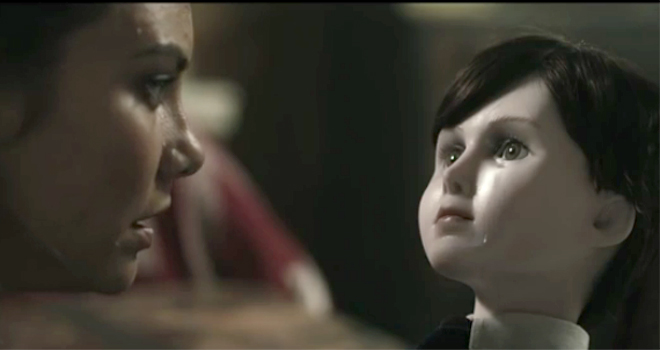“The Boy” is a near-bashful horror programmer that doesn’t overstay its welcome or reach too far outside the bounds of its base-line conceptual ambition. If you’ve seen more than 12 scary movies in your life it’s nearly impossible to be surprised or frightened by this effort, but it fits nicely into the type of PG-13 horror training-wheels that’s designed for pre-pubescent slumber parties and casual Netflix and chill invites and.
Lauren Cohen plays Greta, an American 20-something on the
run from an abusive relationship, who finds herself in England looking for
temporary work. Soon after, an elderly couple known as Heelshires hire Greta to
watch their son Brahms while they leave their gothic stone-mansion for a
long-needed vacation. Here’s the kicker; their actual son was killed in a fire
25 year before the events of this story and they have since been responding to
a three-foot porcelain doll as if it were a sentient being. Because she needs
the money or because being paid to watch a lifeless doll seems too easy to pass
up, or possibly because of the hunky grocery boy Malcolm (Rupert Evans) who
makes daily delivery visits, Greta decides to ignore the fact that she’s living
a horror-movie cliché and takes the job. After a few days alone with a very
specific list of ‘babysitting’ rules to follow she hears strange noises, things
are moved involuntarily and yada yada yada, weird things happen.
Lauren Cohen, known primarily for role on television’s “The
Walking Dead,” pretty much to carries this entire picture by herself. The production
is sparse with very few locations, and the boilerplate nature of the story has
the plot set on a light simmer for the majority of the run-time. Unlike the
foul-mouthed sport killings performed from the charismatic Chucky character
from the “Childs Play” movies, Brahms is a subtly creepy doll and because the
movie wants us to question the protagonists sanity—a lofty narrative goal that
isn’t fully explored—there is relatively little that actually happens from
scene to scene. With that said, Cohen commendably keeps the non-events of film
activated through her natural charisma and a wry charm bubbling just underneath
the surface of her underwritten role. Her chemistry with Rupert Evans is
believable and in brief moments you almost wish they were in a different movie
with a better screenplay.
The set design is just as stock as the plot and the even
lighting of every shot renders the film quite televisual in its bland presentation.
There’s some mild jump-scares sprinkled throughout and they are spaced
accordingly with the film’s pacing but they’re also the only real source of
tension derived from this self-serious B-movie. Towards the last third more
reveals are made and the plot then decides to trade one well-worn genre trope for
another and by this point director William Brent Bell, stylistically, has
already have shown his entire hand.
As somber and patient as “The Boy” wants to present itself
as being, the inherent camp of this tired story is inescapable, especially as
every character behaves as if there were no horror movies within their world. With
that said, this wasn’t a chore to watch and it asks very little of the audience.
It’s undeniable that this movie is traditional to fault and much of it is
certainly eye-roll inducing, but in a cheap, Goosebumps-y kind of way, it’s
acceptable as disposable RedBox schlock.
Grade: C-
Originally published in the Idaho State Journal/Jan-2016
Listen to more discussion about "The Boy" on this week's Jabber and the Drone Podcast.



